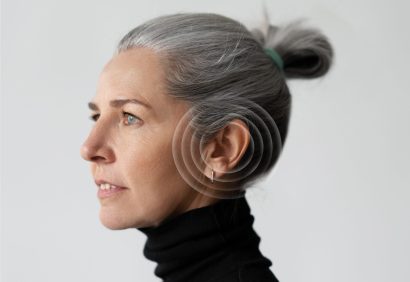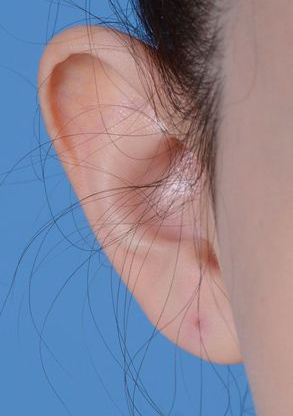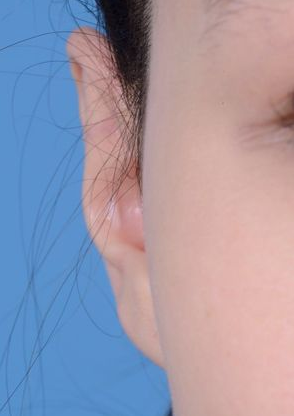Jump To:
Fast Facts
- Approximate Length of Stay: 4-5 Days
- Hospital Stay: No
- Operation Duration: 1-2 Hours
- Approximate Recovery: 2-4 Weeks

Ear Cosmetic Surgery
“Ear Cosmetic Surgery”, also known as “Otoplasty”, is a surgical procedure aimed at altering the shape, size, or position of the ears. It is most commonly performed to correct prominent or protruding ears, but it can also address other cosmetic concerns, such as asymmetry, deformities, or damage due to injury.
Common Reasons for Otoplasty
- Prominent Ears: The most frequent reason for otoplasty is to “pin back” ears that stick out too far from the head.
- Asymmetry: Corrects uneven or mismatched ear shapes or sizes.
- Ear Reduction: Reduces the size of overly large ears (macrotia).
- Ear Lobe Repair: Fixes torn or stretched earlobes, often caused by earrings or injury.
- Deformities: Corrects congenital deformities like “lop ear” (where the tip of the ear folds down and forward) or “cup ear” (a very small ear).
Procedure Overview
- Incisions:
- For most otoplasty procedures, the surgeon makes incisions behind the ears, in the natural creases, so the scars are well-hidden.
- In some cases, incisions may be made on the front side of the ear, but these are usually placed within the ear’s folds to minimize visibility.
- Cartilage Reshaping:
- Depending on the issue being addressed, the surgeon reshapes or removes cartilage to create a more natural contour and position for the ear.
- For ear pinning, the cartilage may be folded back closer to the head and secured with sutures.
- Closure:
- Once the ears are reshaped, the incisions are closed with sutures, and the ears are bandaged for protection during the initial healing period.
Recovery
- Initial Recovery: Most patients experience mild to moderate discomfort, swelling, and bruising, particularly around the ears, which generally subsides within a few weeks.
- Bandages: Patients may need to wear bandages or a headband to support the ears and protect them from trauma during the healing process.
- Return to Normal Activities: Most patients can resume normal activities within a week or two, although contact sports or activities that could cause injury to the ears should be avoided for several weeks.
Benefits
- Improved Appearance: Otoplasty can create a more balanced, natural appearance by addressing ear shape, size, or prominence.
- Increased Confidence: Many individuals, particularly children, experience a significant boost in self-esteem and confidence after the procedure, especially if they were self-conscious or teased about their ears.
- Minimal Scarring: Since the incisions are typically hidden behind the ears or within natural folds, scarring is usually minimal and discreet.
Risks
- As with any surgery, otoplasty carries risks such as infection, bleeding, changes in skin sensation, or asymmetry.
- In rare cases, patients may be dissatisfied with the results and require revision surgery.
Ideal Candidates
- Children over the age of 5 (when the ears have reached most of their adult size) or adults who are unhappy with the appearance of their ears.
- Patients should be in good overall health and have realistic expectations for the outcome.
Otoplasty is a relatively straightforward procedure that can have a profound impact on a person’s appearance and self-esteem, making it a popular choice for both children and adults seeking to improve the aesthetics of their ears.SHIFA is by your side all the way from consulting to providing specialized treatment services.
Compare Before and After Images


Ear Cosmetic Surgery
Frequently Asked
Questions
How risky is Otoplasty?
Otoplasty, or “Ear Pinning Surgery”, is generally considered a safe procedure. However, as with any surgical procedure, there are risks involved. Potential risks of otoplasty include infection, bleeding, scarring, asymmetry, changes in sensation, and unsatisfactory aesthetic results.
Is Otoplasty painful?
While it is acknowledged that the procedure does involve a certain degree of pain, it is often reported to be less severe than many expect and can be effectively controlled with standard over-the-counter pain relief medications.
Why choose SHIFA for Cosmetic Surgery?
In SHIFA we offer all cosmetic and therapeutic surgeries in the shortest possible time with the most reasonable cost.
From transportation services between hotels and medical centers to the use of expert surgeons in every field of treatment, SHIFA is by your side.
SHIFA's Departments
Related Services
Featured Services

Gynecomastia Surgery
“Gynecomastia Surgery”, also known as “Male Breast Reduction”, is a surgical procedure designed to reduce the size of enlarged male

Rhinoplasty
“Rhinoplasty”, commonly known as a “Nose Job,” is a surgical procedure to alter the shape or function of the nose.<br

Body Contouring
“Body Contouring” refers to a range of surgical and non-surgical procedures designed to reshape and improve the appearance of the

Oral and Maxillofacial Surgery
“Oral and Maxillofacial Surgery” (OMFS) is a specialized field of surgery focused on the diagnosis, surgical treatment, and management of
Our Blog Articles
- mehdi.mhj@gmail.com
5 Great reasons to use an online doctor to choose
Delve into the impact of digital life on mental health & discover practical strategies to...
Read More- mehdi.mhj@gmail.com
Doccure – Making your clinic painless visit?
Explore the benefits & challenges of virtual healthcare appointments, along with tips for making good...
Read More- mehdi.mhj@gmail.com
What are the benefits of online doctor booking
Explore importance of quality sleep & learn tips to improve your sleep, ensuring raise-up refreshed...
Read More- mehdi.mhj@gmail.com
Benefits of Consulting With an Online Doctor
Uncover strategies to achieve a harmonious balance between professional and personal well-being....
Read More





Comments are closed.